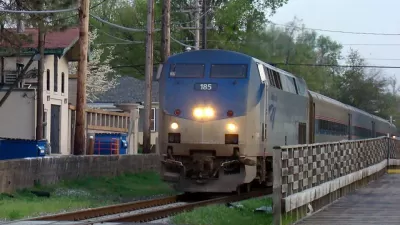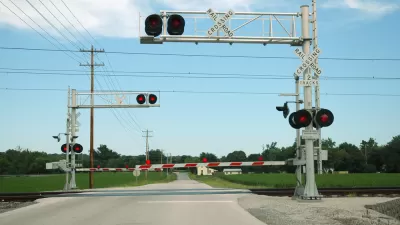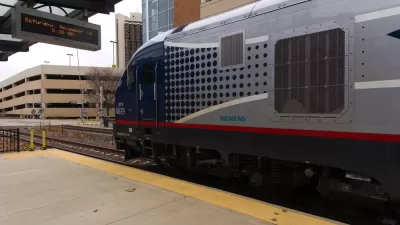A $102 million investment by Illinois along with federal funds from the Recovery Act will pay for double-tracking and a new rail bridge to enable 109 mph service on a key section of Amtrak's Chicago to St. Louis high speed rail corridor.
This particular corridor was the first of many listed by Time's Michael Grunwald last month in the post, "Responding to Distorted Criticisms of the President's High Speed Rail Program," that illustrated results of the president's ambitious high speed rail stimulus program in response to false claims by critics that the program is a failure.
"A key swath of the high-speed rail line between Chicago and St. Louis is set to get $102 million in upgrades, Gov. Pat Quinn announced on Sunday (August 31)," writes Matt McKinney of the Chicago Sun-Times.
The two-year project will reduce travel times between Chicago and St. Louis from five-and-a-half hours to four-and-a-half hours, Quinn said in a written statement..
The work will be performed by the Union Pacific Railroad and overseen by the Illinois Department of Transportation (IDOT), according to IDOT news [PDF]. Amtrak's Illinois Service operates on the corridor.
"This double-tracking [between downstate Mazonia and Elwood] will then allow more daily round-trips at increased 110-mph speeds. Trains now travel at 110 mph between Dwight and Pontiac," adds McKinney.
A map [PDF] of the route and multi-media are available on IDOT's High Speed Rail project page.
"The state has committed $358.8 million to the Chicago-St. Louis route, with the remainder of the $1.7 billion project federally funded," notes McKinney.
[Hat tip to Adam Snider of Politico for including the article in Tuesday's Morning Transportation].
FULL STORY: Quinn announces $102 million investment for high-speed rail

Planetizen Federal Action Tracker
A weekly monitor of how Trump’s orders and actions are impacting planners and planning in America.

Chicago’s Ghost Rails
Just beneath the surface of the modern city lie the remnants of its expansive early 20th-century streetcar system.

San Antonio and Austin are Fusing Into one Massive Megaregion
The region spanning the two central Texas cities is growing fast, posing challenges for local infrastructure and water supplies.

Since Zion's Shuttles Went Electric “The Smog is Gone”
Visitors to Zion National Park can enjoy the canyon via the nation’s first fully electric park shuttle system.

Trump Distributing DOT Safety Funds at 1/10 Rate of Biden
Funds for Safe Streets and other transportation safety and equity programs are being held up by administrative reviews and conflicts with the Trump administration’s priorities.

German Cities Subsidize Taxis for Women Amid Wave of Violence
Free or low-cost taxi rides can help women navigate cities more safely, but critics say the programs don't address the root causes of violence against women.
Urban Design for Planners 1: Software Tools
This six-course series explores essential urban design concepts using open source software and equips planners with the tools they need to participate fully in the urban design process.
Planning for Universal Design
Learn the tools for implementing Universal Design in planning regulations.
planning NEXT
Appalachian Highlands Housing Partners
Mpact (founded as Rail~Volution)
City of Camden Redevelopment Agency
City of Astoria
City of Portland
City of Laramie





























